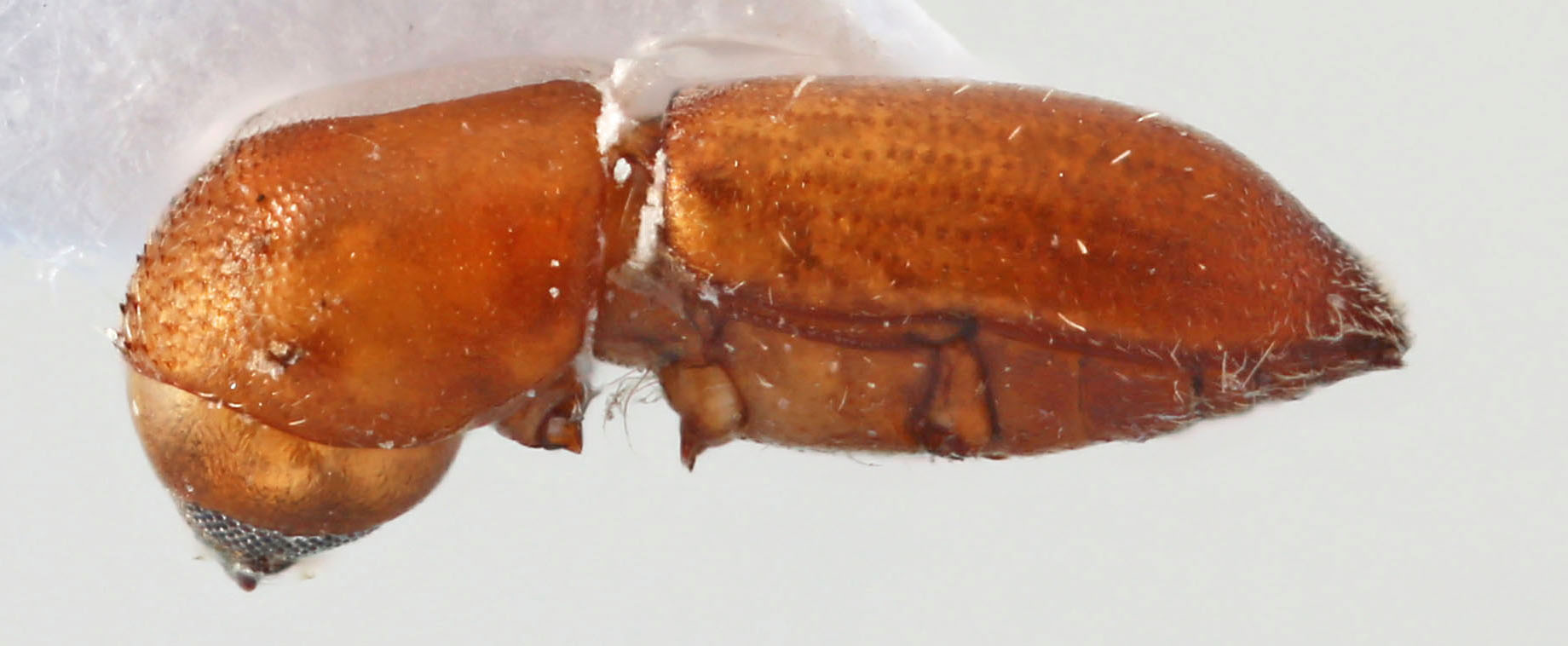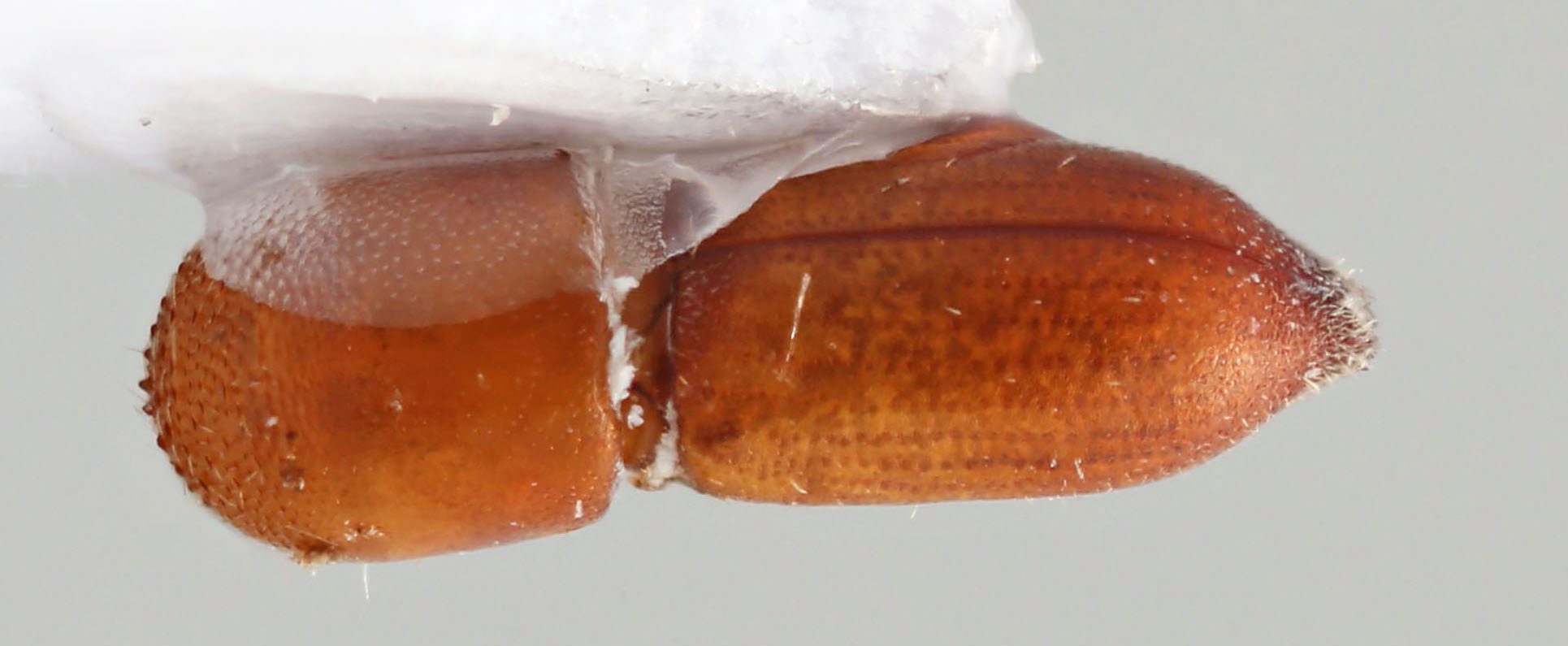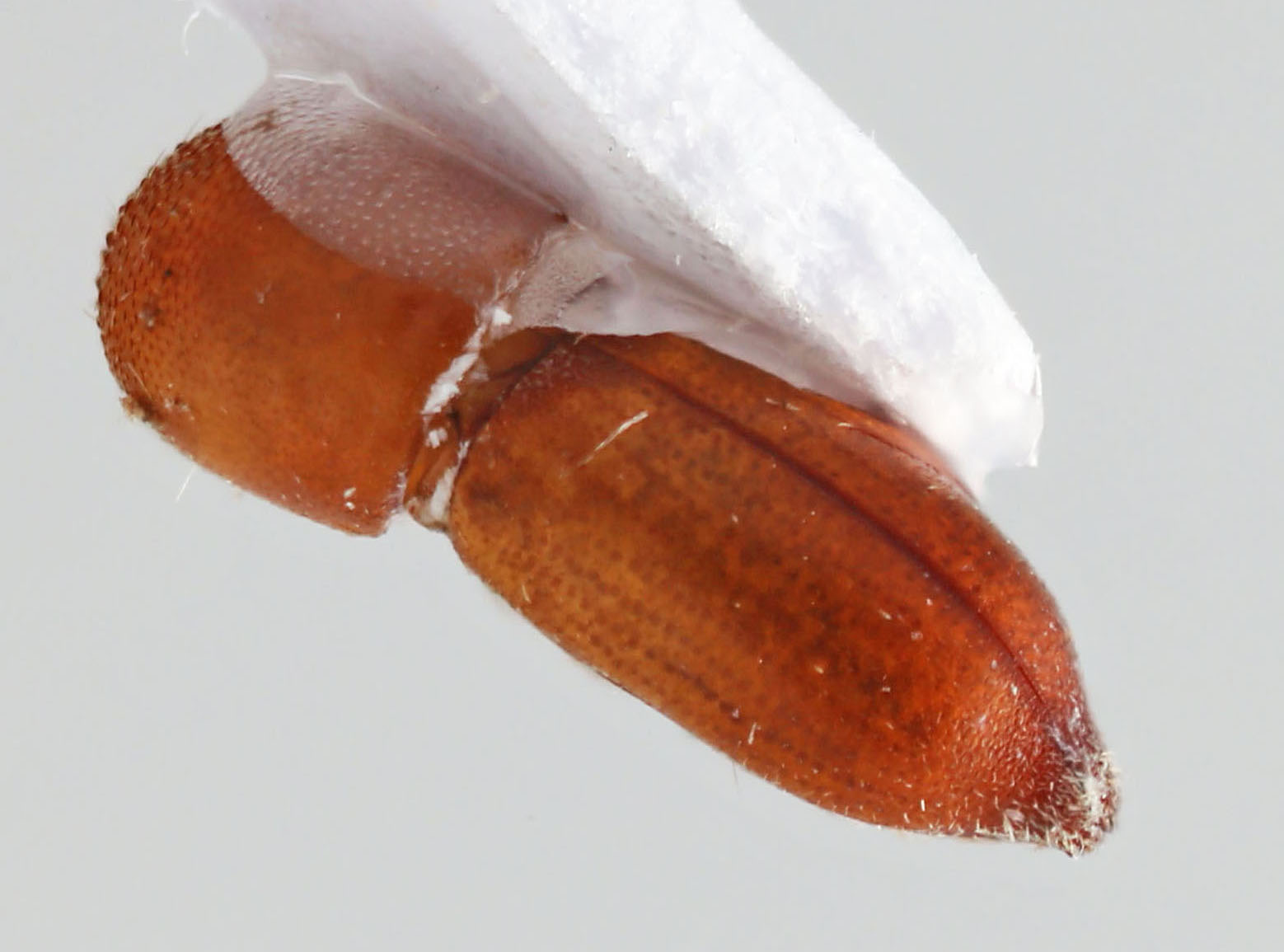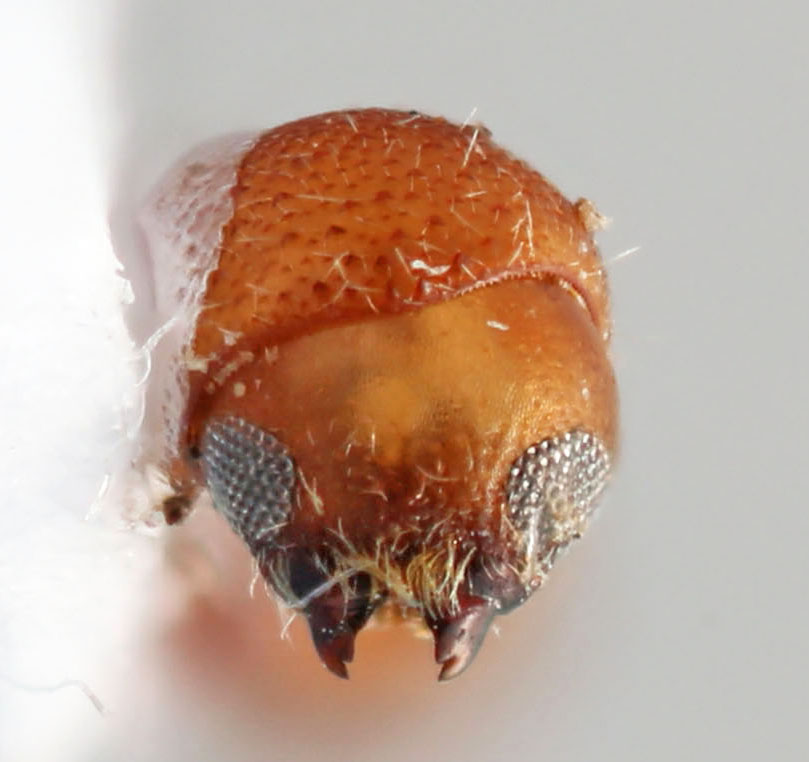Cryptoxyleborus confusus
|
Cryptoxyleborus confusus lateral; W. Sittichaya |
|
Cryptoxyleborus confusus dorsal; W. Sittichaya |
|
Cryptoxyleborus confusus declivity; W. Sittichaya |
|
Cryptoxyleborus confusus frontal; W. Sittichaya |
Taxonomic history
Cryptoxyleborus confusus Browne, 1950: 644.
Diagnosis
2.0 mm long (n = 1); 3.3 times as long as wide (Sittichaya et al. 2019). This species can be distinguished by its small size; elytralelytral:
pertaining to the elytra
pit mycangiamycangia:
structures used to carry fungal symbionts; highly morphologically variable
 absent; antennalantennal:
absent; antennalantennal:
pertaining to the antennae
funicle 3-segmented; elytralelytral:
pertaining to the elytra
interstriae reticulatereticulate:
superficially netlike or made up of a network of lines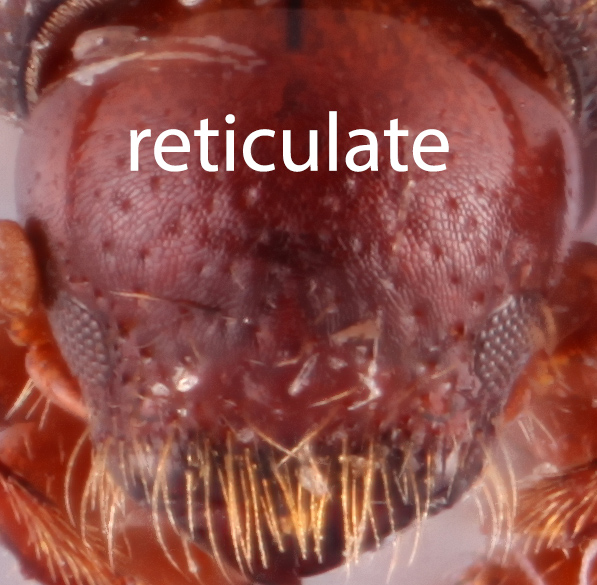 –punctate, punctures confusedconfused:
–punctate, punctures confusedconfused:
of markings, having indefinite outlines or running together as lines or spots without definite pattern; usually referring to punctures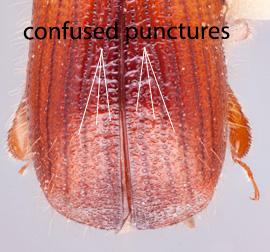 and very densely placed at the basebase:
and very densely placed at the basebase:
point or edge closest to the body; opposite of apex of the discdisc:
of the discdisc:
the flat central upper surface of any body part (e.g. pronotum and elytra) .
.
May be confused with
Cryptoxyleborus percuneolus and Fraudatrix simplex
Distribution
Brunei Darussalam, East & West Malaysia, Indonesia (Sumatra), Thailand
Host plants
only recorded from Shorea (Dipterocarpaceae) (Browne 1961bBrowne 1961b:
Browne FG. 1961b. The biology of Malayan Scolytidae and Platypodidae. Malayan Forest Records 22: 1-255., Beaver and Hulcr 2008Beaver and Hulcr 2008:
Beaver RA, Hulcr J. 2008. A review of the ambrosia beetle genus Cryptoxyleborus Schedl (Coleoptera, Curculionidae: Scolytinae). The Coleopterists Bulletin 62: 133-153. https://doi.org/10.1649/1026.1)
Remarks
Browne (1961b) notes that the gallery system differs from the usual pattern found in Cryptoxyleborus. In this species a surface brood chamber is excavatedexcavated:
with a depression that is not in a segment of a circle
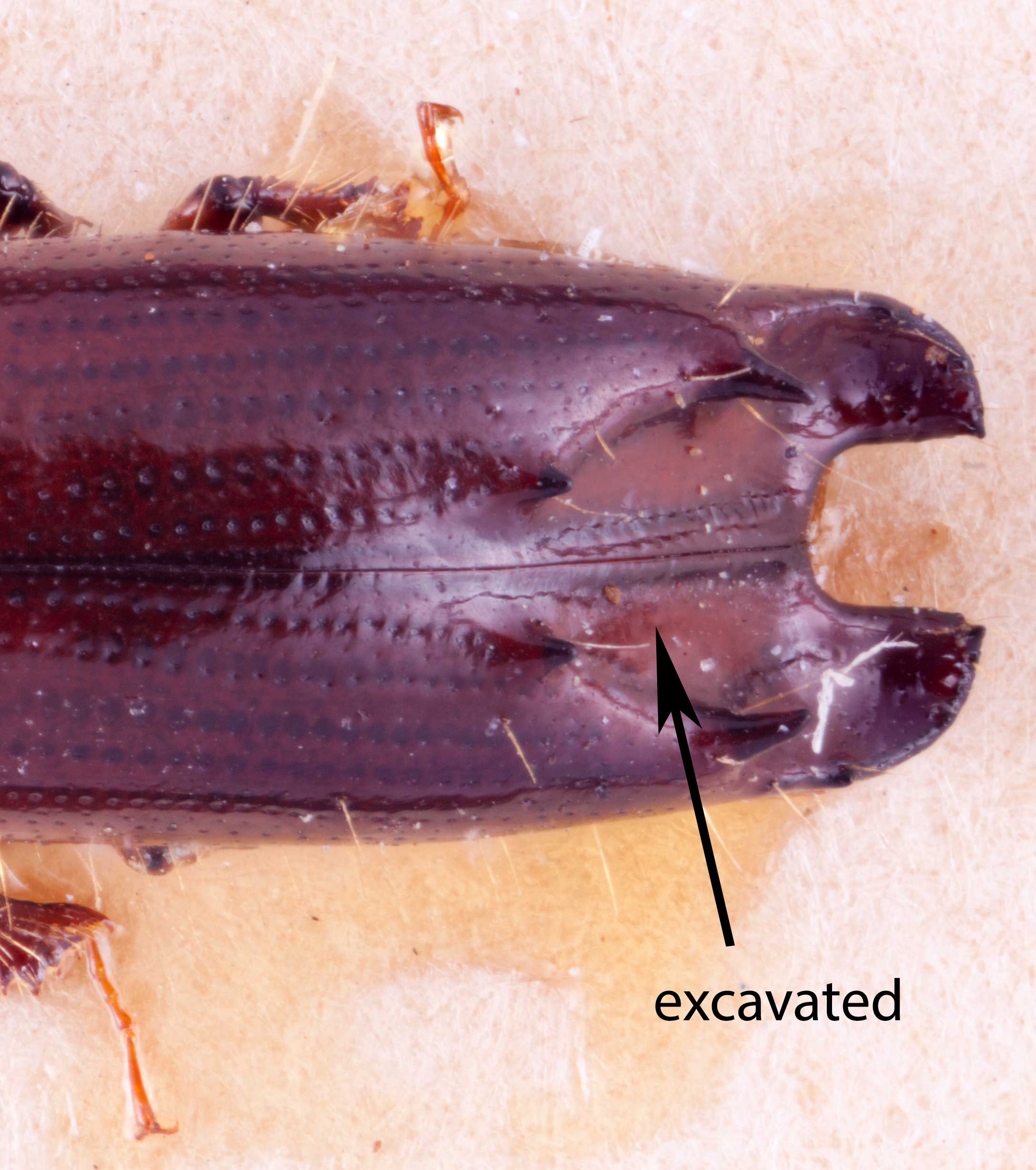 between bark and wood in which most of the larvae develop. However, there are also more deeply penetrating tunnels into the wood. Brood sizes ranged from 18-39 (Browne 1961bBrowne 1961b:
between bark and wood in which most of the larvae develop. However, there are also more deeply penetrating tunnels into the wood. Brood sizes ranged from 18-39 (Browne 1961bBrowne 1961b:
Browne FG. 1961b. The biology of Malayan Scolytidae and Platypodidae. Malayan Forest Records 22: 1-255.).
DNA data
specimens not available for sequencing

